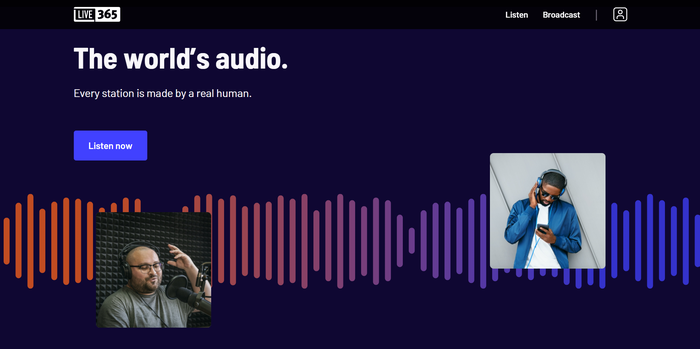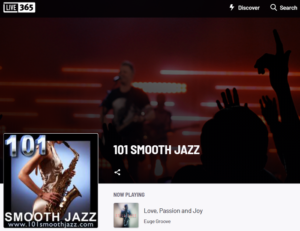
Internet radio aggregator and podcasting resource Live365 blasted out a note today about a full-site redesign. We took advantage of the review opportunity to update our understanding of business details.
 The redesign pretties things up considerably while providing better music station discovery. The company says that every page throughout the platform has been upgraded. There are new genre pages with carousels for featured stations, and listeners can now drill down into sub-genres to find stations curated to their specific tastes.
The redesign pretties things up considerably while providing better music station discovery. The company says that every page throughout the platform has been upgraded. There are new genre pages with carousels for featured stations, and listeners can now drill down into sub-genres to find stations curated to their specific tastes.
On the provision side, Live365 now offers new products and features for streaming broadcasters. In one major addition, non-copyright packages enable talk and sports stations. Distribution to iHeartRadio is also a new feature included in some plans, as well as custom mobile apps and integration with Alexa-driven smart speakers. Benztown is pulled into the mix as well — higher-priced Live365 stations can connect with the preeminent radio imaging producer for audio branding.
The entire release is more than a fresh coat of paint, says General manager Jason Stoddard. “The site is more powerful than ever with a listener-centric feel, dedicated genre pages, and many more editorial content areas. Live365 is, now more than ever, a complete one-stop shop for streaming audio.”
While Live365 is an industry-leading webcasting solution best known for internet radio at every level — amatuer to semi-pro to established brands — it is less recognized as a podcast platform. Hosting is offered, as well as a suite of knowledge resources that include an equipment guide, tutorials from recording tips to money-making advice, and the most comprehensive rundown of podcast music resources we’ve seen anywhere.
We glanced at Live365’s station streaming rates, and saw five levels from $59 to $999 per month, scaling up storage space and number of listener hours. That’s for streams with ads inserted. Ad-free stations cost more ($79 – $1,330 per month) and might result in more listening hours. Revenue sharing is available in all plans which choose to run ads. Webcasters can insert their own, as well, developing business on the side. music licensing is covered by the company (in the u.S., UK, and Canada), relieving webcasters of that onerous and risky part of the business.
.
